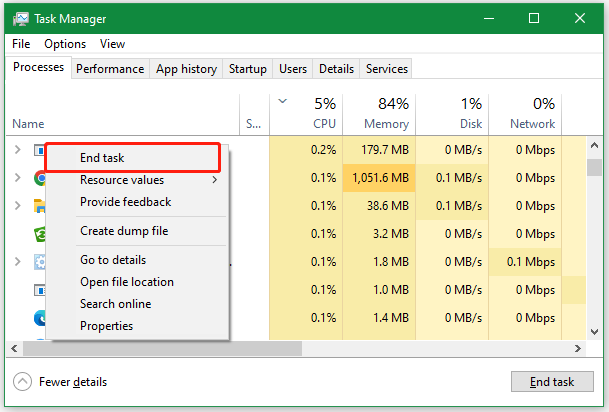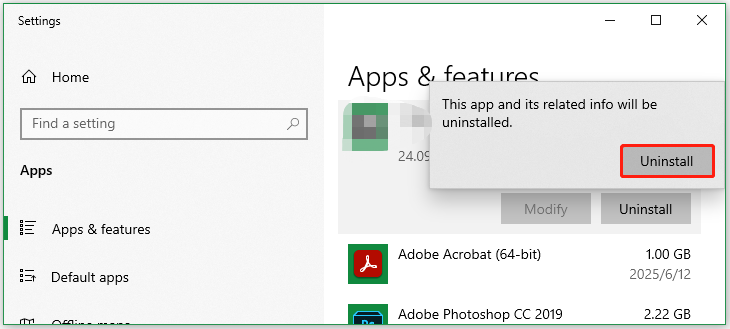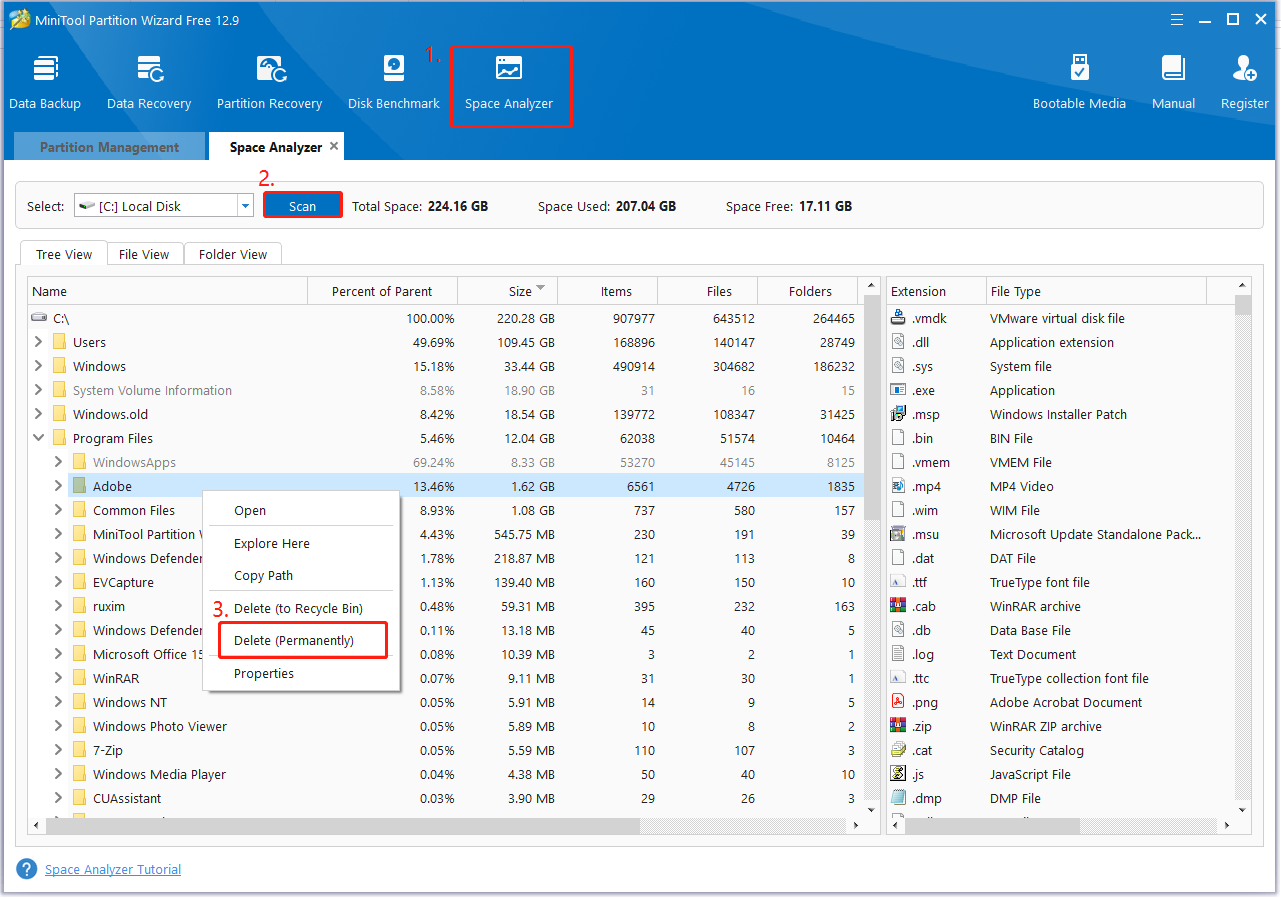Can You Delete Program Files
Both Program Files and Program Files (x86) are essential folders on Windows that contain files required by installed programs. So, it’s not recommended that you delete the entire Program Files or Program Files (x86). Otherwise, it can lead to serious problems, including program malfunctions and even make the computer unusable.
You can delete files in Program Files if you don’t want to use the software anymore. If you cannot delete folders in Program Files (x86), it may be because the program is in use or lacks administrator rights. Don’t worry. I summarize several proven methods to fix the Program Files not deleting on Windows 10/11.
What to Do If You Cannot Delete Folders in Program Files
How to delete files in Program Files? You can try the following solutions one by one until you fix the “unable to remove files in Program Files” issue on Windows 10/11.
Solution 1. End the Program in Task Manager
First of all, you need to make sure the program is not in use if you cannot delete files in Program Files (x86). To end the program, you can open Task Manager by pressing the Ctrl + Shift + Esc keys simultaneously, right-click the program you want to delete, and select End task.

Solution 2. Uninstall the Program
Another simple method to fix the “unable to remove files in Program Files” issue is to uninstall the affected program. This will delete relevant files in Program Files or Program Files (x86).
Step 1. Right-click the Start icon and select Apps & Features.
Step 2. Navigate to the problematic app, select it, and click Uninstall. Then confirm the uninstallation.

Step 3. Now, you can locate the Program Files directory and see if the folder is removed.
Solution 3. Delete the Folder in Program Files
You can directly delete the folder in Program Files via File Explorer. To do that, press the Win + E keys to open File Explorer, open Program Files, and delete unneeded files. If you cannot delete files in Program Files (x86), try using the expert file deleter – MiniTool Partition Wizard. It can analyze your disk space and delete unnecessary files permanently.
MiniTool Partition Wizard FreeClick to Download100%Clean & Safe
Step 1. In the main interface, click Space Analyzer from the top ribbon area and select the C drive where the Program Files folder is located from the drop-down menu.
Step 2. Click Scan and wait for the process to complete. Then expand the Programs Files or Programs Files (x86) category, right click the unneeded files and select Delete (permanently).

Solution 4. Take Ownership of the Folder
If you lack the necessary permission to access the file, you will encounter the Program Files not deleting issue. In this case, you can take ownership of the folder.
Step 1. Right-click the file or folder that states the error and select Properties from the context menu.
Step 2. In the Properties window, navigate to the Security tab and click on Advanced.
Step 3. Now the Advanced Security Settings window pops up, click Change, type the user name you want to grant admin rights, and click Check Names. Then click OK.
Step 4. In the Permission Entry window,select the checkbox for Full control and click OK to save the changes.
Step 5. Tick the box of Replace owner on subcontainers and objects,andclick on OK in the Advanced Security Settings window.
Solution 5. Force Delete Using CMD
Alternatively, you can try forcing the deletion of the file in Program Files using Command Prompt. Here are the detailed steps:
Step 1. Type cmd in the Search box, and then right-click the Command Prompt app and select Run as administrator. Then click Yes in the User Account Control window.
Step 2. In the elevated Command Prompt window, type the following command and press Enter. Here, you need to replace the file path based on your situation.
del C:\Program Files\WinRAR
Wrapping Things Up
Can you delete Program Files? How to delete files in Program Files on Windows 10/11? Now, I believe you know the answer. If you cannot delete files in Program Files (x86), try the above 5 methods. By the way, don’t hesitate to share the post in your communities.

![Apps & Features Taking up Huge Storage Space? [Fix and Stop It]](https://images.minitool.com/partitionwizard.com/images/uploads/2025/06/apps-and-features-taking-up-huge-storage-space-thumbnail.jpg)
![Can’t Delete Documents and Downloads from Microsoft 365 [Fixed]](https://images.minitool.com/partitionwizard.com/images/uploads/2025/06/cant-delete-documents-and-downloads-from-microsoft-365-thumbnail.jpg)
User Comments :